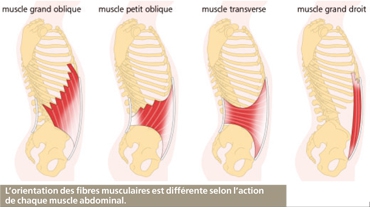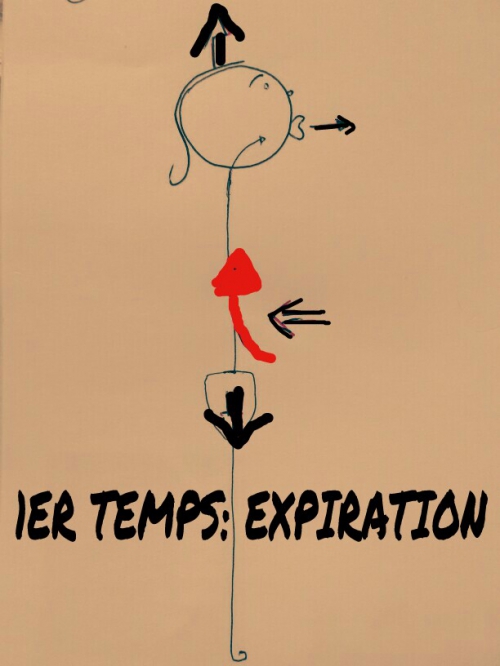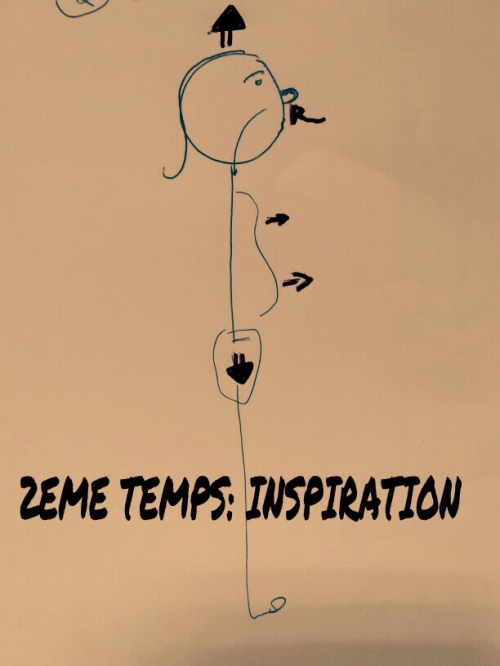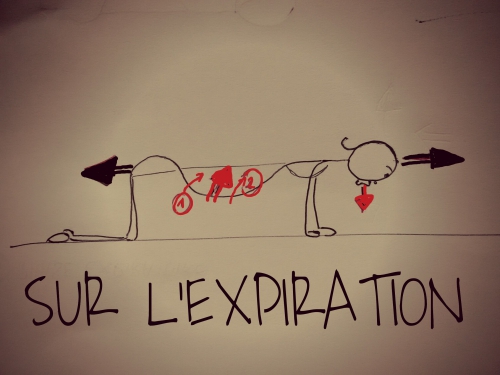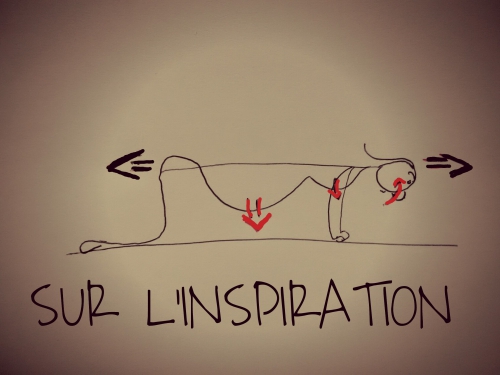AVOIDING WRAPPING YOUR BELLY DURING PREGNANCY
AVOIDING WRAPPING YOUR BELLY DURING PREGNANCY
The famous " how to wrap your belly during pregnancy" showed up again recently with, at best " for short time only", at worst without any warning.
I can already hear some round-bellied mommas saying " Ok darling, nice, BUT that belly weighs on me and I WANT SOME RELIEF NOW!!" (yes, pregnant moms can be real tigresses... huhuhu)
I'll try to explain why I do not recommend this type of tying, and not even for a short time.
And because I fear more than anything a pregnant woman in pain (beware, she can bite ...), I will also try to give you alternatives to relieve the pain and heaviness during the last weeks (last months ?!) of pregnancy. (This can also be used by Dad, who very supportively, is making a little couvade syndrome, because "you know it's not easy for me either huh!")
1. ANATOMICAL REMINDERS :
(REMARK: This is very simplified for ease of understanding and not losing the way the general reader, being too specific; purists will excuse my anatomical approximations here.)
Having a good posture depends on the balance between muscle walls :
- The BACK WALL; represented by the back muscles (para-vertebral, erector spinae muscles .....)
-the ANTERIOR WALL; represented by the abdominal muscles.
Let's look at the anterior wall; consisting of three layers of muscles:
|
SUPERFICIALLY, LIKE A PAIR OF BRACES |
THE RECTUS ABDOMINIS |
FUNCTIONS: bring pubis closer to ribs or ribs to pubis. Will squeeze back, internal organs on the perineum, block the diaphragm ... |
|
IN THE MIDDLE |
THE OBLIQUE MUSCLES |
FUNCTIONS: rotate and side-bend the trunk |
|
DEEPLY, LIKE A HIGH CONTROL WAIST BRIEF REINFORCED IN ITS LOW AREA |
THE TRANSVERSE ABDOMINIS |
FUNCTIONS: fundamental posture muscle , which prevents pressure on the perineum and provides a solid back. Requires muscular tone at rest and enhanced action during efforts. |
External Oblique m. Internal Oblique m. Transverse Abdominis Rectus Abdominis
( The orientation of the muscle fibers is different depending on the action of each abdominal muscle)
Now we have an idea of trunk muscles, we will be able to go into the heart of the matter, namely the anatomy of the pregnant woman ...
2.SPECIAL CASE OF PREGNANT WOMEN:
The weight of the stomach, forward, will cause postural change.
It has many adverse consequences:
- back aches
-increase of the spacing of the rectus and transverse stretching
- worsening anteriorized position of the uterus and embrittlement of suspensory ligaments of the uterus.
-hyperpression on the perineum ...
If the belly "pulls forward", it is because it's propelled forward, because the trunk muscles no longer fulfill their function, especially the tranverse abdominis!
It therefore seems clear that the posture should be corrected, but in an ACTIVE way, so a muscular way !!
3. THE PROBLEM OF PASSIVE CORRECTION
I call passive correction, any external system to the body that will ensure that postural correction.
This includes pregnancy belt which covers the whole belly (belly wrap, maternity support belt...) and the famous "pregnancy belly wrapping "
Some of them like the others will come - by positioning exactly on all trunk muscles- "replace" them and thus prevent them from working.
It's like -to illustrate this propos- instead of letting your child make his 1st steps alone; you make him do the distance by carrying him ;instead of letting him find his balance; then his imbalance that will allow him to lift one foot and then the other and eventually move ...
These systems are "crutches" which we have logically some difficulty getting rid of them.
4. WHAT IS TO BE DONE THEN?
Therefore the transverse abdominis needs to be toned (in synergy with a "good" perineum ... but it will be the subject of another loooong article; otherwise I will permanently lose you if it is not already the case !! ^^), especially in the lower area, the weakest one because behind are located the pelvic organs (bladder, intestines, uterus ...).
To make it short (huhuhu; she said after 3 pages ...); Here are the basic principles:
-Always aim at stretching the spine
-Make efforts exhaling and generally BREATHE OUT BOTTOM UP-
- HOW TO BREATHE OUT BOTTOM UP?
Blow air without constraining, without pinching the lips; rather like wavering the flame of a candle (but not blowing it off) or like singing ... Visualize the exhale as if the air was leaving the perineum and went back up to the mouth causing the rise of the lower part of the belly to "lift-protect" these precious organs.
FIRST STEP: EXHALE
The inhale is an automatical move; we let ourselves get filled with the air.
SECOND STEP: INHALE
And there we are, everyone is trying! Cool! Take a few minutes to sit and try.
Do you feel what is going on in the belly ?!
- WHAT CAN YOU REPLACE BELLY WRAPPING WITH?
Rather than making this type of wrapping "even just for 10 minutes," it would be better to work on that transverse abdominis "even just for 10 minutes!"
IN A TOTALLY ACTIVE WAY:
In an "all-fours" position, or lying on the side ,or on the back with legs raised (if the position is comfortable); practice the RIGHT breathing explained above. Also aim at stretching the spine.
Always start with exhale and then LET YOURSELF GET FILLED IN during inhale .
DURING EXHALE
Do not force inspiration, seeking to inflate the abdomen; this must be reflex.
DURING INHALE
IN A ACTIVE-PASSIVE WAY:
In addition, a PHYSIOMAT type belt or even a rebozo or even better a piece of fabric with a slight elasticity; tied down, and horizontally will do the trick and by a slight pelvic tilt (passive action), will lead to an active participation of your transverse abdominis.
http://www.physiomat.com/PBSCCatalog.asp?CatID=2112145#S10
Here is the way to correctly put the PHYSIOMAT belt: http://www.dailymotion.com/video/x9r2zm_ceinture-physiomat_lifestyle
REMARK: You've benn practising this type of wrapping from time to time and this has relieved you; I do not question the short-term relief it brings; I just wanted to point out the negative consequences of excessive and repeated use of this wrapping and generally disregard of the role of the transverse abdominis (daily, during efforts, and especially during childbirth) and its reinforcement in every stage of life.
I hope this article - (didn't make you fall asleep) - helps you see things more clearly about these wrapping methods and the pregnant woman's posture.
This is obviously only a tiny piece of information on reinforcement of the right abdominal belt; for more info I can only recommend you read M.CAUFRIEZ's books on hypopressive abdomminals or those of MRS De GASQUET Abdominaux; arrëtons le massacre http://www.degasquet.com/) or even get in touch with a practitioner trained in these techniques.
I would like to thank Marianne for the precious help she gave me by correcting this article in english (whish is not my native langage!)
Happy ...Belly Wearing!
A découvrir aussi
Inscrivez-vous au blog
Soyez prévenu par email des prochaines mises à jour
Rejoignez les 9 autres membres

